How to Farm a Mountain Top Using Terracing and Permaculture
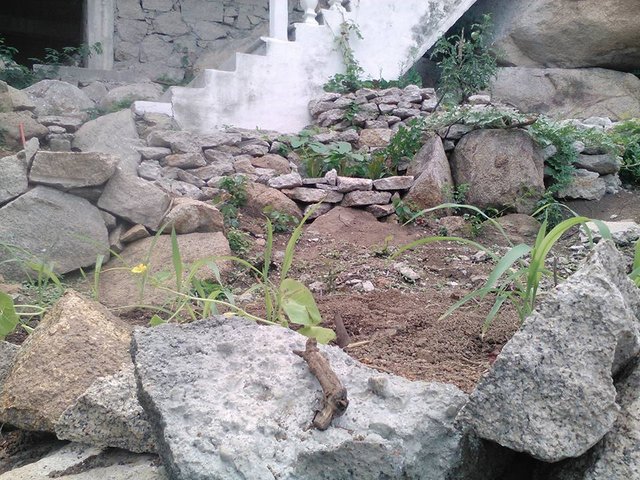
Wide view of the majority of the completed terraces on the hill.
Permaculture has become a hot topic on the internet, but not many people are clear on what it actually is, or how it actually works. For many it is an abstract term to encompass a whole range of fields, all relating to agriculture in one way or another. Simply speaking, permaculture is permanent agriculture. While there is generally a lot of work in the beginning to get it established, the end result is a self sustaining system. This leaves you with a property you are able to visit at any point and find food once it's established, so long as it isn't freezing. In well done systems, you should be able to find some food any time of the year, regardless of the rain conditions. To make a self sustaining permaculture system, you need many techniques all in combination.
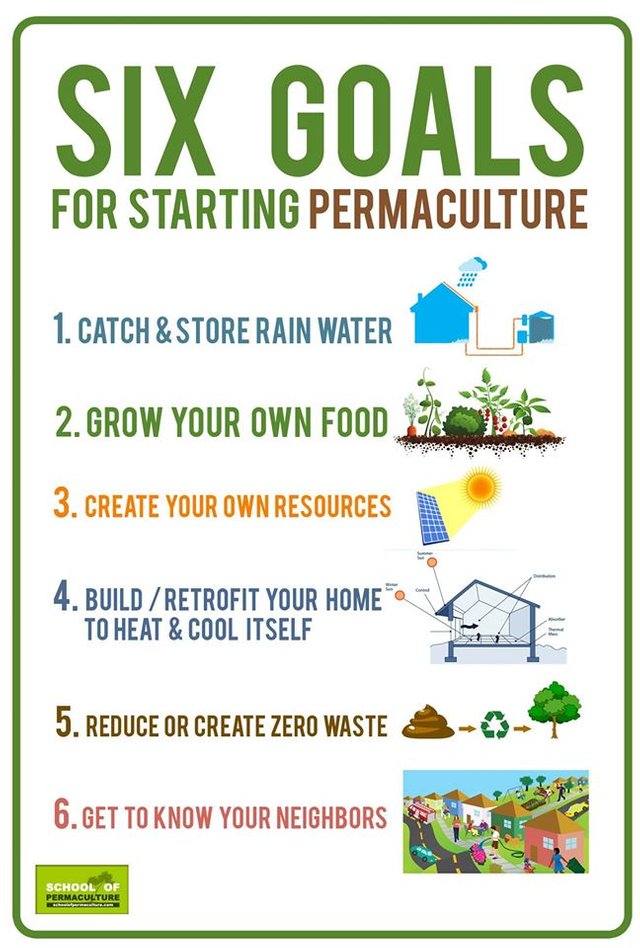
A good image I found off facebook explaining the main goals of permaculture.
The basics points of permaculture are: water management, renewable energy, soil management, animal management, growing food, reducing and reusing waste. Water management is a blanket term. What you have to do to manage your water is dependant on where you are on the planet. In dry climates, the goal is for lots of water storage and retention systems. In wet climates, we look to set up systems that allow the water to escape.
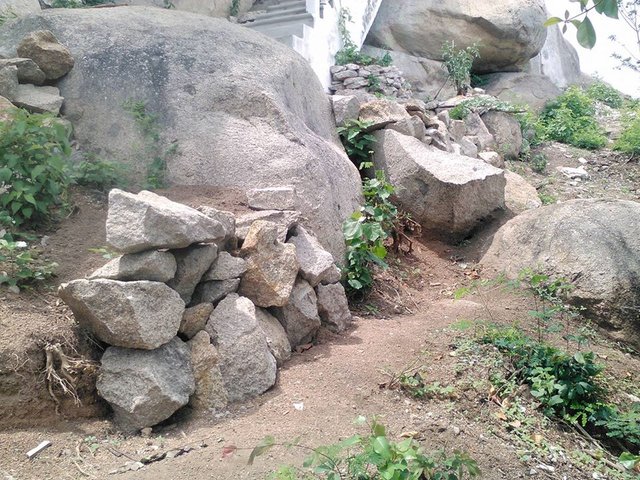
Side view of the progress of building terraces.
Soil management just refers to the process of building up the organic life content of the soil. Mulching is also under this category (and water management, considering it helps greatly with that) as it is a means to protect the growing soil life you are building. In a permaculture system, the mulches are generally natural and locally based to return nutrients to the soil. Not tilling the soil keeps the bacteria and fungi within the soil intact and alive, which allows them to do their job in taking care of feeding and protecting your plants. With the combination of a no-till technique and mulching, you can make it so you never have to feed have to feed and rarely water your plants. These are not the only techniques involved, just some of the important ones. Many techniques are only necessary in certain climates and terrains.
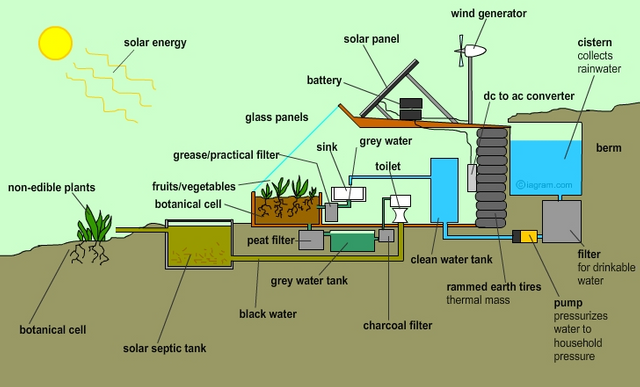
Above is a diagram explaining the pieces of an earthship that make it what it is. We eventually intend on building one of these.

An example of just how glamourous earthsips can be while still functioning.
Renewable energy is a big one, as the goal the permaculture system is to be off grid. While this does take adopting a different lifestyle, one does not have to leave luxuries like internet and electricity behind. The trick is to find a way to acquire these things from the earth. Renewable power sources are put into action to provide power. Alternative housing like earthships make it very easy to both use up waste, and have a home that produces no waste and is self sustaining. Septic systems are designed so they return nutrients to the property. Rainwater collection systems are put into place. Homes are modified to make them able to passively heat and cool. Other's build Earthships, known for their passive heating and cooling systems.
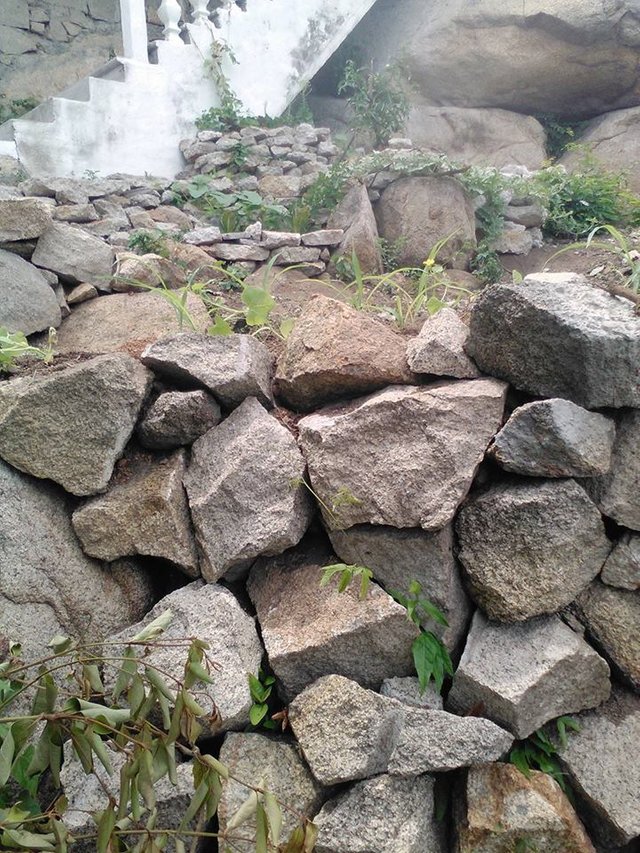
Another view of previously completed terraces.
Animals are important in a permaculture system, as many of them are essential roles in keeping the system going. Not only do they fertilize the land, many of the animals serve other purposes as well as providing food, which makes them essential in a permaculture system. So far I've got dogs and a rebellious cat, who never goes where he's supposed to.
This is Sepp Holzer, a pioneer in permaculture known as The Rebel Farmer.
This is a view of his property, showing his large terraces and hand built lakes.
My first real influence with permaculture was a guy named Sepp Holzer, a man who lives up in the mountains of Austria. Using permaculture farming techniques, he's managed to farm land deemed previously unfarmable by many. Through his practices, he was able to create and take advantage of micro-climates (which are just little areas on a property where the climate is different from the surrounding areas) and grow things on his mountaintop that were thought to be impossible. At this point he is able to harvest a good variety of food, regardless of season. In the winter, all he has to do is go out to one of his hugelkultur mounds and dig up turnips to have food. Without these practices, none of this would be possible.
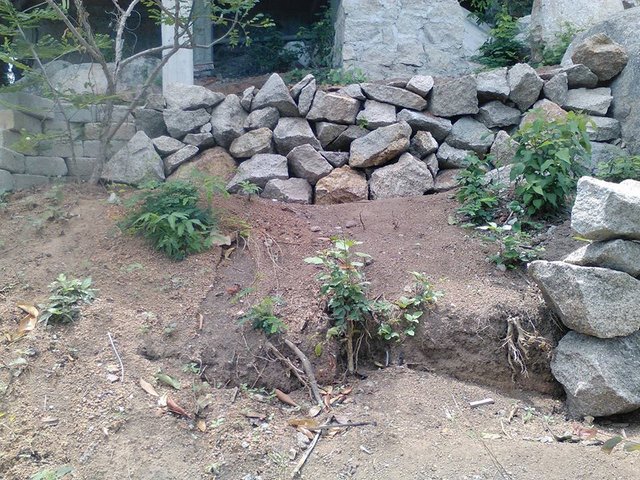
Terracing in progress...
John and I have always been drawn to mountain tops, despite the fact that they are notoriously difficult to farm. When we moved to Acapulco, we were immediately drawn to the mountaintop that later became our home. When we found our house, part of the perk of it was that we were going to be given control of several hillside empty lots, for us to farm. Within days of moving in, we started terracing, which is realistically a crucial step to being able to sustainable farm any hillside. What are terraces? They are essentially man built ledges on mountainsides that follow the curvature of the land and have a slight grade to direct water. The end result is a ledge that: prevents soil and water run off, retains water during droughts, helps build soil and makes it easier to navigate a hillside farm.
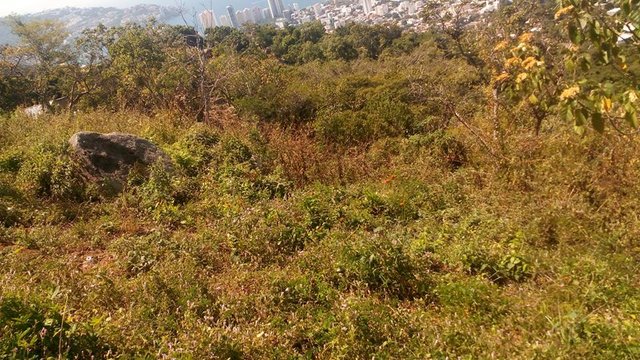
This is the remaining section of hill that we still have to terrace. Note the steep jungle....
So what are they made of? Our terraces are made of rocks, dirt and plants. Using the natural curvature of the hill, we clear out spaces to start building ledges. Using boulders or concrete hunks (generally referred to as urbanite, as they are generally scavanged from urban construction sites) you stack them until you have a wall, taking care that the stones fit together as easily as possible. The idea is to build a somewhat sound wall, one that can withstand the weight of soil until the plants have grown in enough to lock the terrace wall in place.
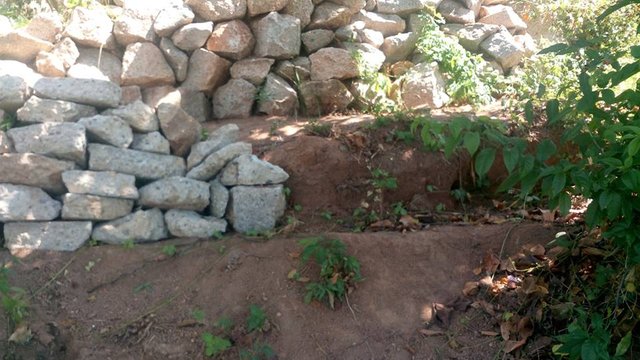
Terraces currently in progress.
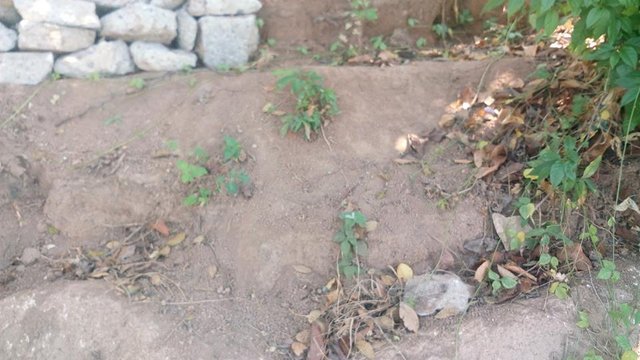
Area cleared for terraces, you can see the curvature of the land pretty well.
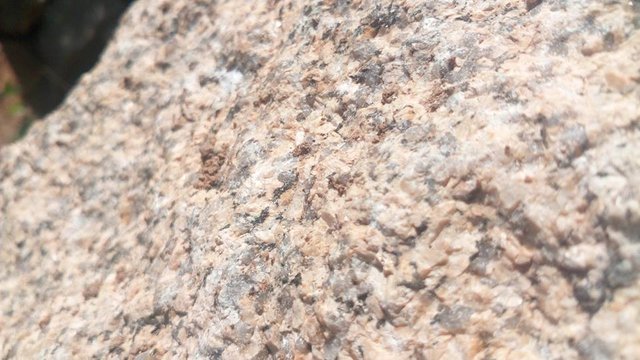
Close up photo to show the composition of our boulders here in Acapulco.
For the most part, all the terraces shown in this post were built by John. I helped occasionally, moving smaller boulders and some buckets. But John was the one moving them one by one from the big pile of boulders by our driveway, around the house to some point on the mountainside. These boulders have a high quartz content, so they're quite dense. I was seriously surprised at how much the small boulders I can move weigh. To give you an idea of comparison, I can move a concrete hunk that's more than twice the size of the maximum boulder size I can handle, they're that dense. Lucky for us, there's been lots of construction on our mountain lately, leading to us filling the back of the truck with concrete road debree, repeatedly.
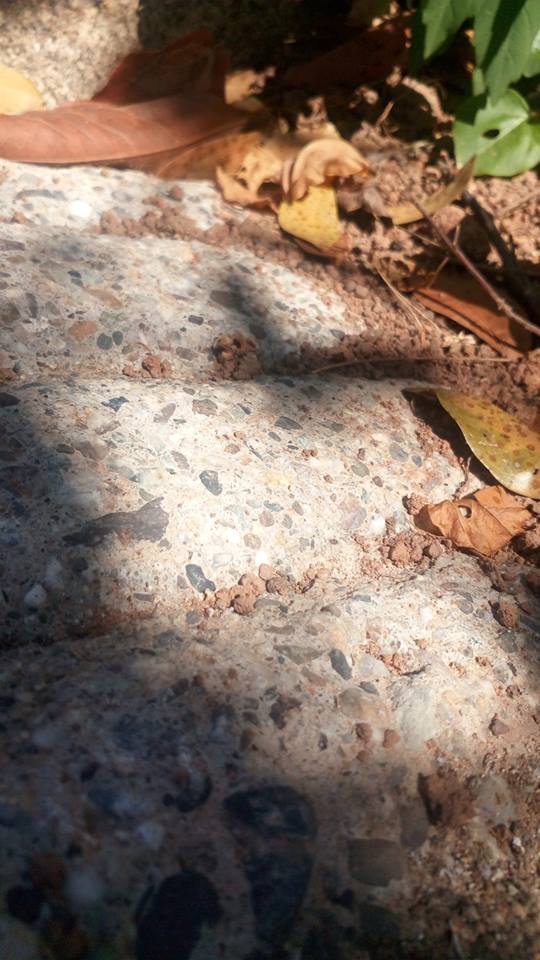
Close shot of urbanite, which is just construction rocks from a site.
So if you're looking for a source of rocks, look at construction sights. Alternatively, tires are a great way to build terraces, if you have access to lots of those. Just line them up, pack them with dirt pretty tight and put the next layer on top slightly sloped towards the hill. Go as high as you need to for the terrace to be complete(max without reinforing is about 8 feet).
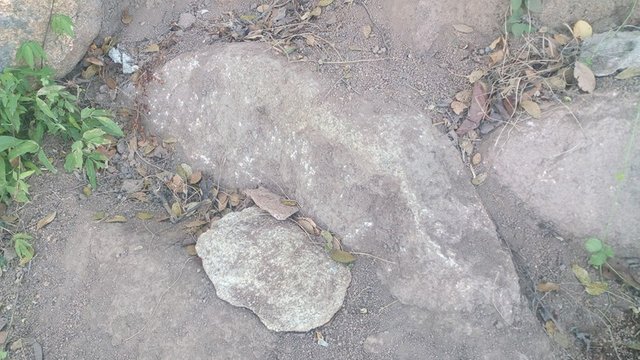
Acapulco's mountains are just big piles of boulders, here's proof. We use them as foundations for walls when terracing.
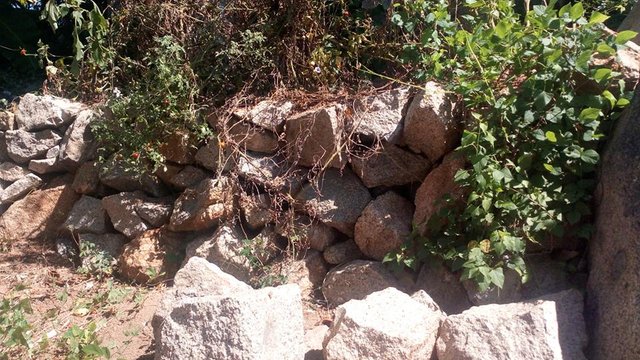
Already established terrace.
After you build up the wall (if it's a tall one you end up having to do it in sections, so the bottom wall is supported by something, the dirt, while you build up, in that case, do this at the first fill), add gravel, which can be concrete rubble if that's all you have, to the bottom. This allows for good drainage, which is essential in clay heavy soils. Then put some rotting wood after, logs and sticks and such. Backfill to level with dirt and mulch heavily with local materials.
A really good example of sheet mulching.
Sheet mulching is the best way to handle mulching, and it really is just kind of natural over time. All sheet mulching is is putting a layers of compostable material over an area you intend to plant, one by one until you're satisfied with the results or run out of materials. In a terrace, you start with bare ground. I generally cover this with cardboard. This smothers out any weeds that might sprout up when I start watering the soil here.
I then put some sort of straw like material. Our current source of this is basically to make piles of plant matter when we weed (which is literally taming the jungle) and to leave them in the sun for a few days. They generally get fried by the sun, making them good for the next layer of mulch. We buy store bought wood chip mulch from Home Depot here, but it's really moldy and is almost like mushroom compost. We sprinkle this around our sheet mulch evenly. Many people go many layers beyond this, we do this at a minimum, adding more layers as time goes on.
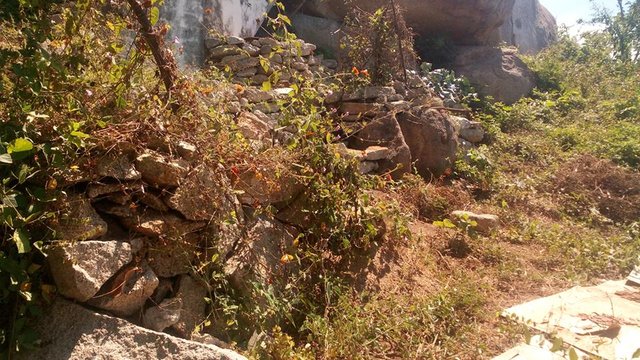
The garden as it stands today.
Maintenance of our terraces involves taming the jungle that surrounds them. This means going out there in jeans with a machete and gloves, chopping and pulling the astonishing amounts of plant matter into big piles before the day gets too hot. As the sun shines, it cooks the weeds now in shock in a pile, starting the process of decomposition. I under estimated the jungle this year, and it literally ate my garden. Maintenance also involves regular adding to the mulch layers, just by chopping and dropping. You can chop and drop anything from dying leaves off the plants themselves, suckers off a tomato plant, tree branches, or even weeds. They get baked by the sun while they're on top, and soon they're covered and the decomposition process really starts( try very hard to avoid weeds that have gone to seed because this can ruin your weed preventing mulch).
As soon as you have your terraces built, filled and mulched, they need to be planted. It's best to do this immediately, so the roots of the plants can get a head start in stabilizing the terrace. As they grow larger, the terrace grows stronger and more resistant to blow out in heavy rains.
Sometimes things go wrong when terracing. One path terrace that we have tomato's growing in had a huge blow out, because the tomato plants were not yet big enough to support the weight of the wall during heavy rains during the wet season(the roof run off runs onto this terrace). John restabilized and rebuilt the wall, backfilling with more dirt. We saved the tomato plants and have not have any problems with this terrace since.
For us until we moved to this mountaintop, terracing was something we had learned about in our research on permaculture. We always planned to build terraces eventually, considering we have always had the end goal of ending up on a mountaintop. While we do not own the property we have been terracing, we will leave with the experience and knowledge to make our own property that much better.
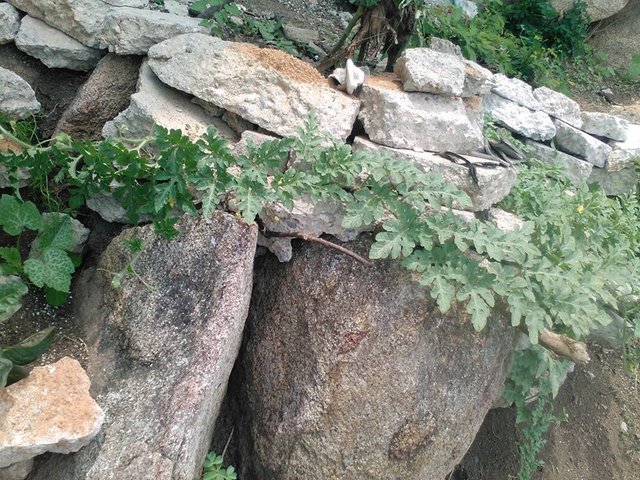
Melons and other climbing plants LOVE terraces.
Terraces do wonders in stopping soil erosion, something that Mexico has a pretty big problem with. They retain a lot of water, making them useful in climates that include a dry season.They also end up increasing the water stored in the ground and can help raise the water table of your area. A feature like this cuts watering down to a minimum, something crucial in environments with limited water supply. They also provide somewhat flat levels down the hillside, easily accessable by foot. What was once a steep mountainside is now a sloping mountainside, with trails and paths to show you the way. Once fully established with fruit trees and complementary plants, terraces of this low tech style can stay in place for many generations. This is just with clever boulder stacking and filling them with the benefitial things.
Loved this post. I'm a budding permaculturist who's planning on
settling in the hills. Your post was really informative, and reaffirmation that I'm on the right track. Wish you all the best with your land, and I'm definitely following you for updates :)
As an update...chicken farming is extremely hard on the side of a mountain LOL
Upvoted by @gardening-trail
Join us in the steemtrail chat channel
Read our full guidelines here
Excellent stuff, I'm following you now!
Lord willing I too will have a property that looks like that one day.
The eight acres I'm about to buy has a nice slope to it, and we got plenty of rock to work with!
'
Thanks @lily-da-vine!
@lily-da-vine Another great article. We are also on steep land with loads and loads and loads of rocks. And lots of terraces have been made. It sounds like you guys are a similar climate to us here in guatemala. Keep up the great work!
We've considered moving to Guatemala before!
Really great post on terracing. Thanks for showing some of my favorite places that demonstrate it too.
#Permaculture meets #PassiveIncome http://nodesofvalue.com/explore-6-types-sources-of-passive-income-nature-social-side-hustle-traditional-financial-and-crypto/. #Nature, #Social, #Sidehustle, #Traditional, #Financial, #Crypto #dividends